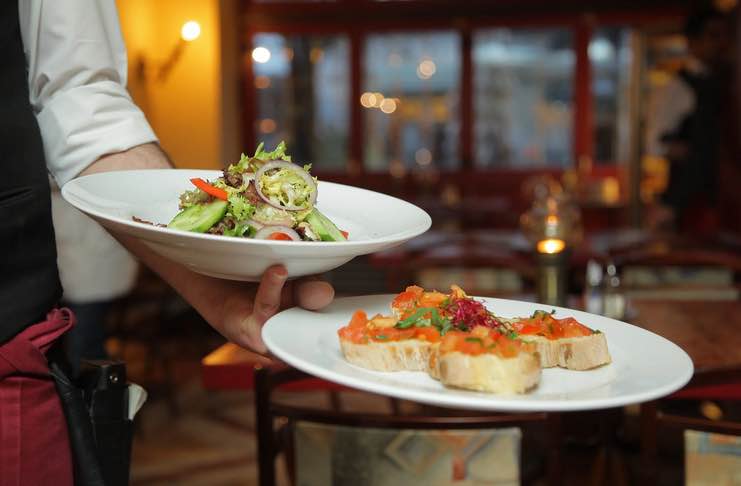Each time you travel to different corners of the world, or even dip into a regional cuisine, you encounter new flavors, ingredients, and cooking techniques. While traditional dishes have their charm, an adventurous palate may crave something more innovative. The world of culinary fusion offers a playground where you can combine the best of all worlds to create mouth-watering, unique dishes. In this blog post, we’ll explore how different cultural flavors and techniques can elevate your cooking and how you can experiment with fusion cuisine in your own kitchen.
What is Culinary Fusion?
Culinary fusion is the art of combining diverse cooking traditions and ingredients to create inventive, tantalizing dishes that defy categorization. By merging flavors, textures, and techniques, fusion cuisine creates new taste experiences, often bringing out unexpected harmony between seemingly unrelated cuisines. With a bit of creativity, you can embark on an exciting culinary journey right in your own kitchen.
For example, watch this video about French Asian fusion:
Pairing Flavors
Understanding the flavor profiles of different cuisines is key to mastering fusion cooking. There are plenty of examples of popular global flavor combinations that can serve as a starting point as you experiment with your own fusion dishes. Mediterranean flavors include olive oil, garlic, lemon, and fresh herbs, while Japanese cuisine often involves soy sauce, mirin, rice vinegar, and sake.
Indian food uses cumin, coriander, turmeric, and garam masala, Caribbean utilizes allspice, jerk seasoning, Scotch bonnet peppers, and coconut milk, and Mexican dishes have chili peppers, cumin, oregano, and cilantro. Thai food often incorporates lemongrass, fish sauce, lime, and basil.
When experimenting with fusion dishes, pairing the right wine can enhance the overall dining experience. As you explore international flavors, consider the wine profiles that harmonize with different cuisines. To help you select the perfect pairing for your meal, check out this list of best beginner wines from various regions around the world.
Fusion Cooking Techniques
When it comes to fusion cuisine, adopting unique cooking techniques from other cultures can elevate your dish to new heights. Experiment with different methods to introduce new textures and flavors. Borrowed from Indigenous culture, smoking imparts a rich, complex flavor to meats and vegetables.
Tempura originated in Japan and involves coating ingredients in a light batter and frying them until crispy. Poaching involves gently cooking delicate ingredients, like eggs or fish, in a flavorful liquid is a classic French technique. And tagine is a slow-cooking technique from Morocco that involves simmering ingredients in a clay vessel with a cone-shaped lid.
Watch this video to learn more about tagine:
Texture and Style
A key aspect of fusion cuisine is playing with different textures in a single dish. By combining textures that contrast yet complement one another, you can create an exciting, harmonious meal. For example, you can combine the creaminess of coconut milk (a Thai-inspired ingredient) with the crunch of tempura-battered vegetables (Japanese). Or layer the tender, slow-cooked meats from a Moroccan tagine with a crispy, grilled flatbread (Mediterranean).
If you need inspiration, look to existing fusion cuisines for ideas. Some popular fusion styles include:
- Tex-Mex: A marriage of Texas and Mexican styles, featuring hearty ingredients like beef, beans, and spices.
- Californian-Asian: Combining Asian flavors with fresh, local California ingredients (think sushi burritos).
- Indo-Chinese: An amalgamation of Indian and Chinese cuisines, often featuring tangy, spicy, and sweet flavors.
Making a Creative Menu
Don’t be afraid to take risks when experimenting with different ingredients in fusion cooking. Incorporating lesser-known ingredients can surprise and delight the palate. For instance, yuzu, a Japanese citrus fruit, adds a unique burst of flavor to sauces and dressings, while a touch of sumac, a tangy Middle Eastern spice, can enhance the flavors of grilled or roasted vegetables. Szechuan peppercorns from China provide a punch of heat that can enhance the spiciness of a dish without overwhelming it.
Watch this video for a short Szechuan peppercorns guide:
A well-crafted fusion menu can elevate a simple meal to a memorable dining experience. As you explore different cuisines, consider how you might pair them together for a cohesive, well-balanced menu. For example, start with a creative appetizer like Thai-style shrimp with a light Japanese tempura batter and follow with a main dish like Caribbean-spiced grilled fish on a bed of Mediterranean-inspired quinoa salad. Finish off your menu with a rich, velvety Indian-inspired chai spiced panna cotta for dessert.
Tips for Success
While experimentation is at the heart of fusion cooking, it’s essential to consider balance and synergy when creating your culinary masterpieces. As a rule of thumb, less is more! Avoid overloading your dish with too many flavors and ingredients. Focus on balancing bold flavors with complementary textures and research different cuisines and their traditional flavor combinations to create a solid foundation for your fusion recipes.
Culinary fusion offers endless opportunities to experiment with ingredients, techniques, and flavors from around the world. By understanding the foundational flavors of different cultures and learning to incorporate novel cooking methods, you can create your own flavorful masterpieces that impress even the most adventurous eaters. Embrace the challenge of fusion cooking and embark on a thrilling culinary journey without ever leaving your kitchen.
Anthony is a passionate food enthusiast living in the bustling food scene of New York City. With an insatiable curiosity for culinary exploration, he loves exploring the city’s diverse eateries, seeking out unique flavors and sharing his gastronomic adventures with fellow food lovers.
